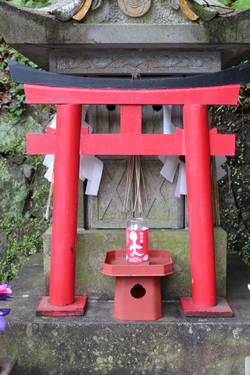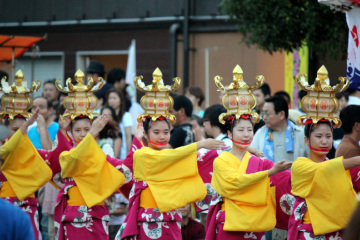With the clock gaining momentum on my remaining time in Korea I've decided to try to make the most of it and get out and see a few things. Due to a holiday and a random day off I ended up with an unexpected 4 day weekend in June. On a whim I checked out the cost of flights to Japan and found a ticket that was less than $200! So, I decided to spend a long weekend in Kyoto and Nagoya. It was a whirlwind trip of a roundtrip ride on the shinkansen, shrines, temples, torii and delicious food. Below are a few pictures from the weekend.
Photos from my incredible and very memorable trip back to Kumamoto.

Shinto (神道), the way of the kami, is an indigenous religion in Japan. Followers worship kami, a word which can be translated as a god, spirit or essence. Some kami such as Amaterasu from whom the Japanese imperial line are descended are in human form. However, other kami are more animistic in nature and can be found in rivers, mountains and even rocks.
The actual number of Shinto practitioners is difficult to count since it is not necessary to be a recognized adherent to worship at a Shinto Shrine. Many Japanese will visit a shrine throughout the year with the largest attendance being on New Year's day. However, an important examination, an upcoming job interview or the desire for an amulet are other reasons which might draw a visitor into a shrine.
Since I am interested in culture and religion, specifically localized religious practices I decided to visit as many Shinto shrines as possible during my most recent travels to Japan. I managed to visit at least 25 shrines in just 9 days and partake in the most basic of Shinto rituals - praying to the kami.
Click "Read More" below to view a few of my favorite shrines from this trip.

Amidst the scorching August sun and thick humidity common to Kumamoto Prefecture, the town of Yamaga in southern Japan, hosts its annual lantern festival. Thousands of people descend upon this small hot springs town to watch local women dressed in matching yukata, cotton kimono, while wearing delicate hand-made golden lanterns atop their heads.
The festival consists of two days of events, mostly centered around Omiya Shrine and Yamaga's famous lanterns. On the first day only a select few women dance down the main street for the gathered crowds. They repeat their performance and pause to take pictures. Afterwards attendees are entertained with taiko performances, children's games and popular festival food because the event is concluded with a flashy fireworks show over the Kikuchi River. On the second day after various events 1,000 women dance while wearing matching yukata and lanterns. They move gracefully to the slow music of the accompanying shamisan before men dressed in traditional clothing bring forth palanquins which have been blessed by the shrine.
Yamaga's Lantern Festival re-enacts a local story about a visit from emperor Keikou and his entourage. The thick fog from the Kikuchi River impeded their travels and the local people of Yamaga ventured out with lighted torches to lead them back to the village. The people of Yamaga recreate this story as part of concluding events of the lantern festival.
Though the festival has strong ties with Omiya Shrine, a local Shinto Shrine the event corresponds with o-bon, an annual festival during which Japanese return to the ancestral homes, clean the family graves and welcome back their ancestors. O-bon celebrations throughout Japan feature women dressed in yukata dancing the o-bon odori along the streets. The festival incorporates this dance as well which highlights the syncretized nature of Buddhism and Shinto in Japan. Few Japanese are one religion or the other but integrate practices and rituals from both into their lives.
Below are pictures from the two days of the festival.